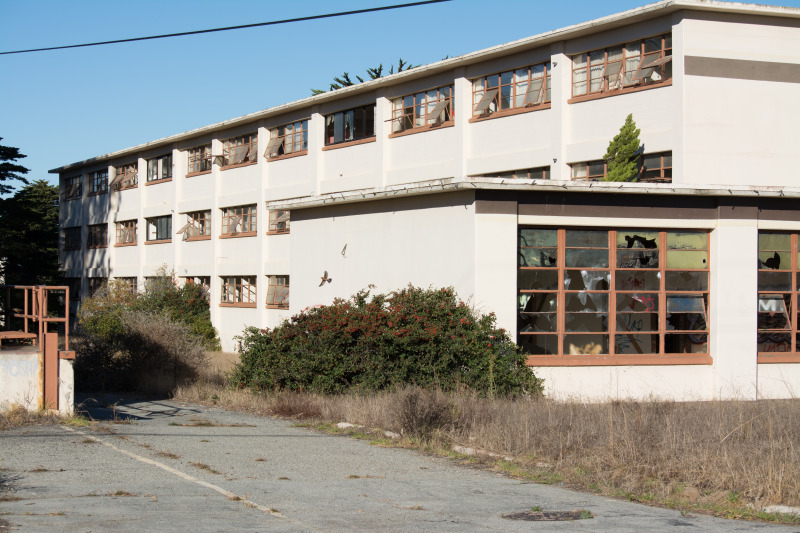“The former CDEC hill is a site for an incoming hotel site for the city of Marina. Immediately adjacent to where we are sitting is intended to be a single-family residential development,” says Michael Houlemard in his office at a new office park right next to the former CDEC hill.
Houlemard is executive director of the Fort Ord Reuse Authority (FORA). The state Legislature created FORA to coordinate the transition to civilian use. Its job is to replace what was lost when Fort Ord closed.
“Replacing the 36,000 in population that was here when the Fort Ord military installation was fully up and operating. There were 15,000 soldiers, thousands of civilians and their families that were on this base every day that occupied the nearly 6,000 buildings on the former Fort Ord,” says Houlemard.
The loss of all those people and jobs added up to a more than $500 million hit to the region. The Base Reuse Plan aims to replace that by creating a whole new community with jobs, housing and outdoor space. Houlemard estimates it’s about 35 percent complete, which is much slower than everyone expected.
And that helps explain why Marina Mayor Bruce Delgado got on his knees and kissed the dirt at a recent groundbreaking for a new movie theater. “There’s a lot of steps that went to today, and it’s just a relief and a wonder that it’s here today. So it’s almost a religious moment,” says Delgado.
It's a relief because Marina has one of the largest stakes in the former fort. When the base closed, land was divided up among several entities, including the Bureau of Land Management, Cal State Monterey Bay and neighboring cities, like Marina. It acquired 3,300 acres, doubling its size.
It wasn’t hard to get developers to sign up. After all, this is prime coastal real estate. But everything came a grinding halt when the economy tanked. Now things are starting to turn around.
“It’s never as fast as some would like, but we are at a screaming pace when you consider we just finished a $23 million apartment complex. We’re in the throes of a $45 million student housing project, a $100 million VA clinic next to the theater,” says Delgado.
Yet dozens of old Army buildings still stand on the sites of other planned developments all over the base. “That’s one of the things drawing the public’s ire. People would love to see that developed. It’s been 20 years,” said Michael Salerno, with the environmental group Keep Fort Ord Wild.
Michael Salerno stands in a parking lot next to a swath of oak trees slated for development. It’s just steps from rows of vacant three-story concrete buildings with broken windows and graffiti.
“Our mission is pretty simple. It’s to preserve the open space and unique oak forest, and support development on the already blighted areas. We call it the existing footprint of the base: where the pavement stopped,” says Salerno.
The majority of the 28,0000-acre base has been preserved for open space. In 2012, about half became the Fort Ord National Monument. The federal park has a spider web of trails and fire roads for mountain biking, horseback riding and hiking.
But right now only half of the monument is open to the public. The rest is an area known as the impact area, and it’s still being cleaned up. For 77 years, it was a place where soldiers trained on ranges with hand grenades, rockets and rifles.
“Then, of course, the impact area’s center is where the high-explosive artillery were also used: 81 mm mortars, 105 mm howitzer projectiles. And we also have larger items, self-propelled 8-inch artillery explosives that are very dangerous,” says Collins.
Collins has been working on the cleanup for 20 years. He’s the Army’s BRAC environmental coordinator.
“It’s a significant effort, I can say that. In the last 20 years, the amount of work the Army has done substantially reduced the hazards with the chemicals and the explosive ordnance,” says Collins.
He expects munitions removal will be complete by 2022. It’s a long process that begins with clearing vegetation. Then a survey team searches for unexploded ordnance. To date they’ve collected more than 50,000.
“Very slow and time-consuming, but it’s necessary to be able to remove the explosive hazards on the ground surface, so that the property can be used in the future for habitat conservation,” says Collins.
This cleanup is one of the Army’s last responsibilities on this base. The rest of the former fort’s future lies in the hands of the surrounding communities and the reuse authority. FORA’s Michael Houlemard expects redevelopment will be nearly complete by 2030.
“We will have a flourishing national monument. We will have major new trail networks. We will have a way of connecting the coast to the inland areas. It’ll be a complete and thriving community that we all expected it would be,” says Houlemard.
